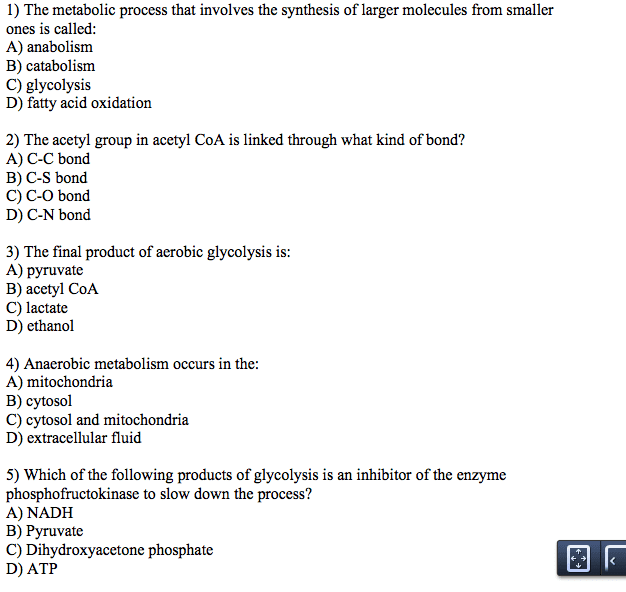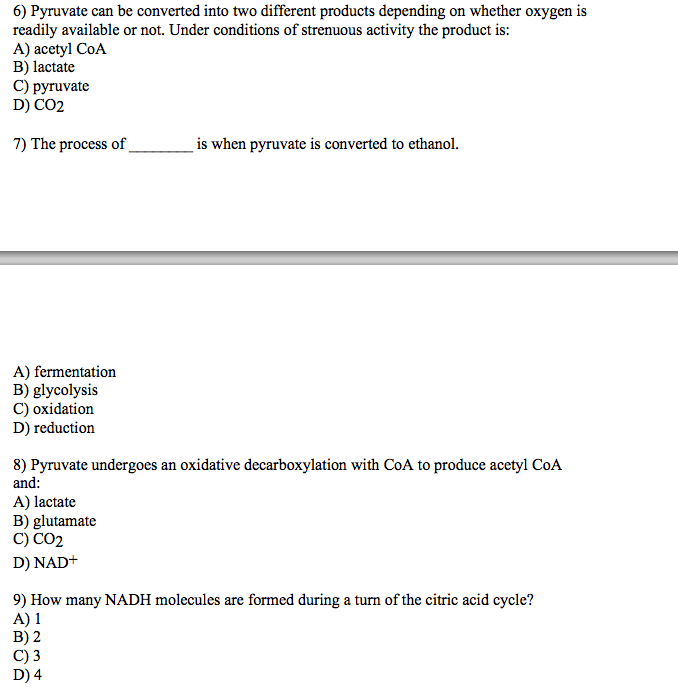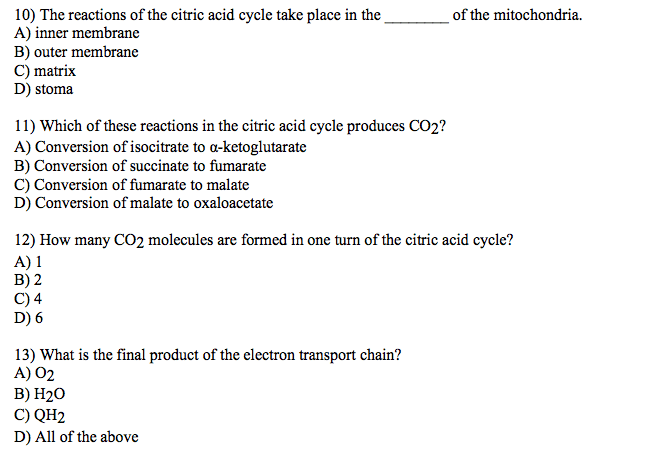26. How many NET ATPâs can be obtained from THREE (3) molecules of glucose via (only) GLYCOLYSIS under the following conditions:
a. anaerobic conditions:
____________________________________________________________________________________________________________________________________________
b. aerobic conditions:
____________________________________________________________________________________________________________________________________________
27. Under aerobic conditions (glycolysis, the pyruvate dehydrogenase complex, and the citric acid cycle), how many ATPâs can be obtained from TWO (2) molecules of glucose via:
a. substrate level phosphorylation:
____________________________________________________________________________________________________________________________________________
b. oxidative phosphorylation:
____________________________________________________________________________________________________________________________________________
c. net ATP production:
____________________________________________________________________________________________________________________________________________
28. When completely oxidized, how many Acetyl CoAâs will be produced from a 12-CARBON fatty acid chain?
____________________________________________________________________________________________________________________________________________
29. How many cycles of β-oxidation will there be to completely oxidize a 12-CARBON fatty acid chain to Acetyl-CoAâs?
____________________________________________________________________________________________________________________________________________
30. How many ATPâs can be obtained from the oxidation of a 12-CARBON fatty acid via: (aerobic conditions)
a. β-oxidation:
____________________________________________________________________________________________________________________________________________
b. the citric acid cycle:
____________________________________________________________________________________________________________________________________________
c. What is the net production of ATPâs?
____________________________________________________________________________________________________________________________________________
31. How many ATPâs can be obtained from the oxidation of a ten (10) carbon fatty acid? Include the ATPâs produced via the following: (aerobic conditions)
a. substrate level phosphorylation:
____________________________________________________________________________________________________________________________________________
b. oxidative phosphorylation:
____________________________________________________________________________________________________________________________________________
c. net ATP production:
____________________________________________________________________________________________________________________________________________




